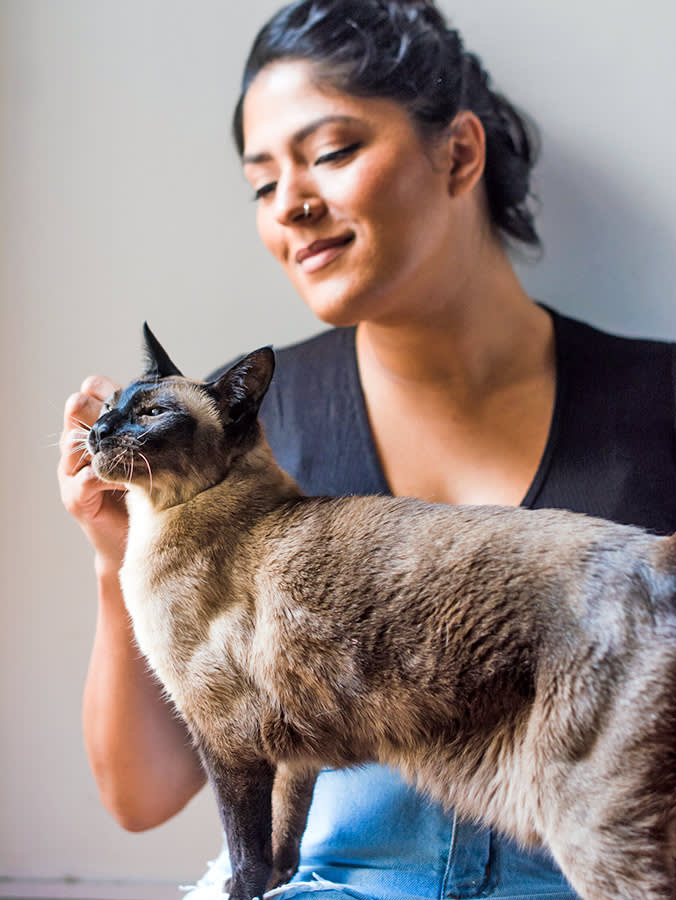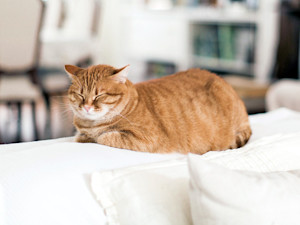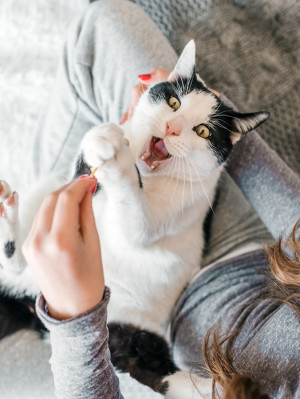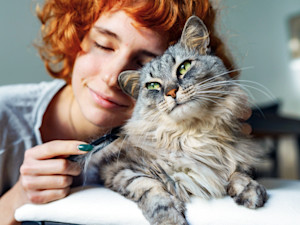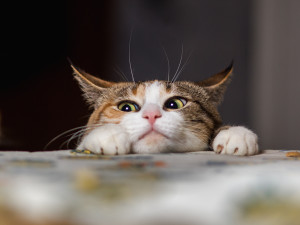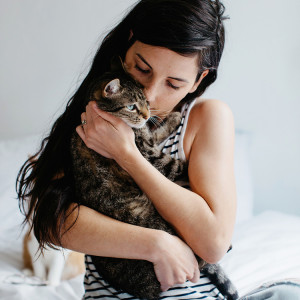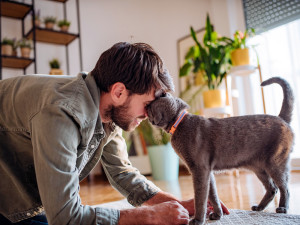The Power of Purr: Cats Can Help Heal Themselves With Their Own Purrs
They’re pretty great for people, too.
Cats are often misunderstood pets, especially in comparison to stereotypically fun-loving dogs. Many people assume their independence reflects an indifference to humans. Others claim they act aloof out of spite or disinterest. (But those who really know cats know they aren’t all aloof or independent.)
In reality, it takes more than a few treats to gain a cat’s affection so their love must be hard-earned. And just like their seemingly guarded disposition, a cat’s purr contains multitudes. There can be any number of reasons behind it, and it actually has the ability to provide relief to pain, both physical and mental.
Save on the litter with color-changing tech that helps you better care for your cat.
How purring benefits cats
As for why cats purr when they’re in pain or dying, it’s for the same reason that I still listen to Jimmy Eat World’s Bleed American or that millennials flip on Gilmore Girls each fall. Lusvardi equates these purrs to a similar shot of nostalgia.
“While not exactly the same, a lot of people will listen to music that reminds them of happier times or rewatch familiar TV shows when they are going through a difficult period in their life to remind them of happier times. Purring may be the cat’s way of comforting themselves in a similar manner,” he says.
How much do you spend on your pet per year?
Lusvardi adds that it’s also possible purring may disrupt the transmission of pain signals to the cat’s brain by generating vibrations that essentially confuse the neurons. In short, they’re tricking their bodies into feeling better. In fact, a similar tactic is used in human medicine.
“The idea is, for example, if you create a lot of vibrations near where someone is going to receive an injection, their nerves will be getting so much input in that area that the pain signals will get lost in the chaos. It may not completely eliminate all pain, but it can dampen it,” Lusvardi explains.
Quandt points to the fact that kittens are generally born blind, deaf, and lacking the ability to walk. Alternatively, purring is one of the first things they can do. “And since purring can be felt as a vibration, it’s something that newborn kittens can experience when they can’t hear or see anything,” he explains. The action then both feels good and leads to getting fed, so they might associate it with positive feelings later on.
One 2001 studyopens in new tab even examined this hypothesis that purring provides functions beyond simply indicating contentment, particularly as a tool in healing. Researchers recorded the purrs of 44 total animals, all of which were in the larger cat mammal family. This included cheetahs, ocelots, pumas, servals, and of course, domestic cats. They found that each of the felines’ purrs produced a frequency somewhere between 25 and 150 hertz, a range that aligns with those used in medical treatments for bone growth and pain relief.
Specifically, domestic cats generally fell between 25 hertz and 50 hertz, two low frequencies known to promote bone growth and fracture healing. The implication here is that purring might have evolved as an internal healing mechanism. Beyond that, the findings suggest that purring can potentially help cats recover faster and maintain their physical strength, even during periods of inactivity. Think of it like one of those vibrating belts for weight loss if they weren’t a scam.
For what it’s worth, Lusvardi believes these claims are far from outlandish, stating that they’re certainly within the realm of possibility. “Purrs are typically within a frequency range that is thought to promote healing, so it’s absolutely reasonable that the cat would purr as a way to activate their body’s natural healing mechanisms,” he adds.
How cats and their purrs help people
Naturally, more research is needed on that front.
Still, other research has previously found that cats have the ability to reduce stress and anxietyopens in new tab in pet parents. It’s this brand of mental benefits that both Lusvardi and Quandt point to as a major plus to adopting a cat. While gushing about the symbiotic relationship between pets and their people, Quandt says, “Besides the actual companionship and love, we are able to pet and caress and touch our animals, and this feels good for them and for us. We can talk to them and share things we wouldn’t share with other people. Our animals don’t judge us or talk back to us, and they come to us baggage-free.”
In addition to his behavioral efforts with cats, Lusvardi works in the psychiatry field as a physician assistant. Through this, he’s witnessed firsthand the colossal impact cat companionship can have on mental well-being. “I have had numerous patients over the years that were experiencing suicidal thoughts. When discussing reasons for them to live as part of a safety plan, their cats are often listed as the strongest reason to stay alive,” he says.
As Lusvardi puts it, cats provide not only meaning but joy to pet parents. And when they’re sitting on your lap purring, the happiness you feel is simply a reflection of that. “While they may not be a cure for major depressive disorder or another mental health condition, they provide other benefits that can’t really be measured,” he says.
Why do cats purr?
“People assume purring is a sign of happiness when it’s actually a pretty complex behavior,” says Joey Lusvardi, cat behaviorist and founder of Class Act Catsopens in new tab in Minneapolis. He explains that while it is true that cats will purr when they’re enjoying being pet, indulging on some catnip, or excited to see their favorite people, happiness isn’t always behind the behavior. “Cats will purr in a wide range of circumstances across their lifespan,” he confirms.
Stephen Quandt, founder of Stephen Quandt Feline Behavior Associatesopens in new tab, adds the caveat that much of what we know about the motivations or causes behind purring is purely observational. This info largely relies on connecting the dots when these behaviors occur simultaneously to indicate certain conclusions about their origins. “And most of the time, cats appear to be calm and content when we see them purring so we feel safe in saying that cats purr to express contentment and relaxation,” he says.
This can also include purring to communicate with other cats or as a means to let their humans know they want something like food or attention. Lusvardi explains that purrs meant to solicit something might even sound different, possibly with a more urgent quality to them. “My own cats will often circle around me, purring up a storm as I prepare their food. Their purrs have a more rapid quality to them compared to purrs when we’re just relaxing on the couch,” he says.
But he goes on to note how cats will sometimes purr when they’re injured or during the last moments of their lives. Per Quandt, “Since purring is most often an expression of positive emotions, people are often not equipped or experienced enough to recognize it in other contexts, like sickness and anxiety.”
So, while purring may have more than one meaning (and it’s not all positive), it’s one of the best ways to know what’s going on with your cat. If they really are sick — and remember their purrs can only stave off the pain so much — that little noise might just tip you off enough to head to the vet. And that’s pretty powerful, too.
